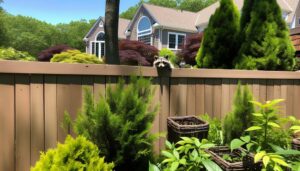How to Assess Damage to Your Car After Hitting a Raccoon
Hitting a raccoon can indeed damage your car. The extent of the damage depends on your speed, the impact location, and the vehicle's design.
Common issues include bumper dents, grille cracks, undercarriage problems, and potential fluid leaks. Mechanical components like the radiator, exhaust system, and suspension can also be compromised, leading to further issues.
Immediate inspection is essential to identify and address any safety risks. Repair costs can range from minor fixes to significant expenditures, depending on damage severity and insurance coverage.
To understand how to effectively handle such situations and minimize risks, continue exploring our detailed insights.

Key Takeaways
- Hitting a raccoon can cause bumper dents and scratches.
- Grille cracks from raccoon impact can affect engine cooling.
- Undercarriage damage may lead to fluid leaks and misalignment.
- Radiator damage is common, potentially leading to coolant leaks.
- Vehicle misalignment and compromised structural integrity are possible.
Immediate Impact on Your Car

Upon colliding with a raccoon, the immediate impact on your car can vary widely depending on factors such as the speed of the vehicle and the point of contact. At higher speeds, kinetic energy transfer is significantly greater, potentially leading to more substantial vehicular damage.
The specific location of impact—whether it be the bumper, grille, or undercarriage—also influences the extent of damage. Additionally, the size of the raccoon plays a role; larger animals can cause more severe effects, including potential structural compromise.
The vehicle's design, including crumple zones and material composition, may either mitigate or exacerbate damage. Understanding these nuances is essential for accurate assessment and effective repair strategies, ensuring safety and functionality post-collision.
Common Types of Damage
When a vehicle collides with a raccoon, common types of damage often include dents in the bumper, cracks in the grille, and potential undercarriage issues such as fluid leaks or misalignment.
The bumper typically absorbs the initial impact, resulting in visible dents or scratches. Cracks in the grille can impede airflow to the radiator, potentially affecting engine cooling.
Undercarriage damage may not be immediately visible but can lead to more severe issues, such as fluid leaks from the transmission or radiator and misalignment of suspension components.
These damages not only compromise the vehicle's structural integrity but also pose safety risks if left unaddressed. Immediate inspection and repair are recommended to ensure vehicle safety and peak performance.
Potential Mechanical Issues

Colliding with a raccoon can result in several potential mechanical issues that may compromise the vehicle's functionality and safety. The impact can damage critical components such as the radiator, leading to coolant leaks and subsequent engine overheating.
Damage to the undercarriage might affect the exhaust system, causing loud noises or emissions issues. Additionally, the steering and suspension systems are susceptible to misalignment or damage, which can impair handling and tire wear.
Electrical wiring located near the vehicle's front could also be compromised, resulting in malfunctioning headlights or other electrical systems. It is imperative to conduct a thorough inspection post-collision to identify and address these mechanical issues promptly, ensuring the vehicle remains safe and operational.
Safety Measures to Take
To guarantee driver and passenger safety after hitting a raccoon, it is necessary to immediately pull over to a safe location and thoroughly inspect the vehicle for any visible damage. Key areas to focus on include the front bumper, undercarriage, and wheel wells. Additionally, it is important to check for fluid leaks and verify the headlights and turn signals are operational.
| Safety Check | Potential Issues | Action Required |
|---|---|---|
| Bumper | Cracks, dents, or detachment | Assess damage, consider repair |
| Undercarriage | Fluid leaks, hanging parts | Check for leaks, secure parts |
| Lights | Broken or non-functional | Test lights, replace if needed |
Taking these steps can mitigate further risks and ensure continued safe operation of the vehicle.
Repair and Cost Considerations

Assessing the extent of damage caused by hitting a raccoon is crucial for determining the needed repairs and associated costs. Immediate inspection should focus on the undercarriage, bumper, and wheel well areas, as these are most vulnerable.
Damage can range from minor cosmetic issues to more severe structural impairments. A professional mechanic should evaluate the vehicle for potential issues such as misalignment, fluid leaks, or compromised safety features.
Repair costs can vary significantly, from a few hundred dollars for minor fixes to several thousand for extensive damage. Insurance coverage may mitigate out-of-pocket expenses; however, policy specifics and deductibles will influence the overall financial impact.
Accurate damage evaluation ensures safety and top-notch vehicle performance post-repair.
Conclusion
Can hitting a raccoon damage a car?
The immediate impact often results in common types of damage such as dents, scratches, and potential mechanical issues including compromised suspension or radiator leaks.
Safety measures, such as promptly inspecting the vehicle, can mitigate further complications.
Repair and cost considerations vary based on the extent of damage, but timely professional evaluation is essential.
Understanding these aspects underscores the importance of cautious driving and immediate response after such incidents.






